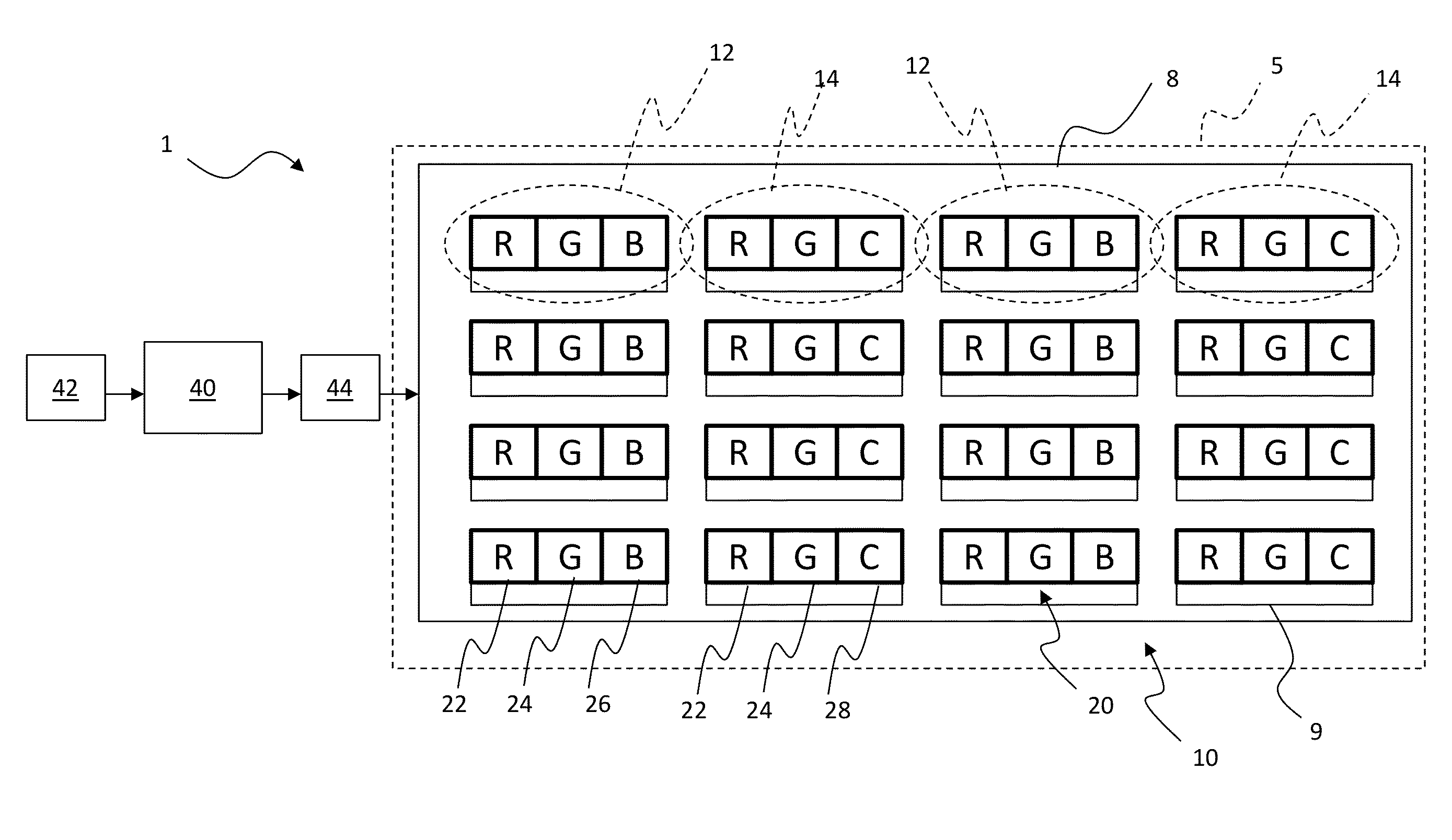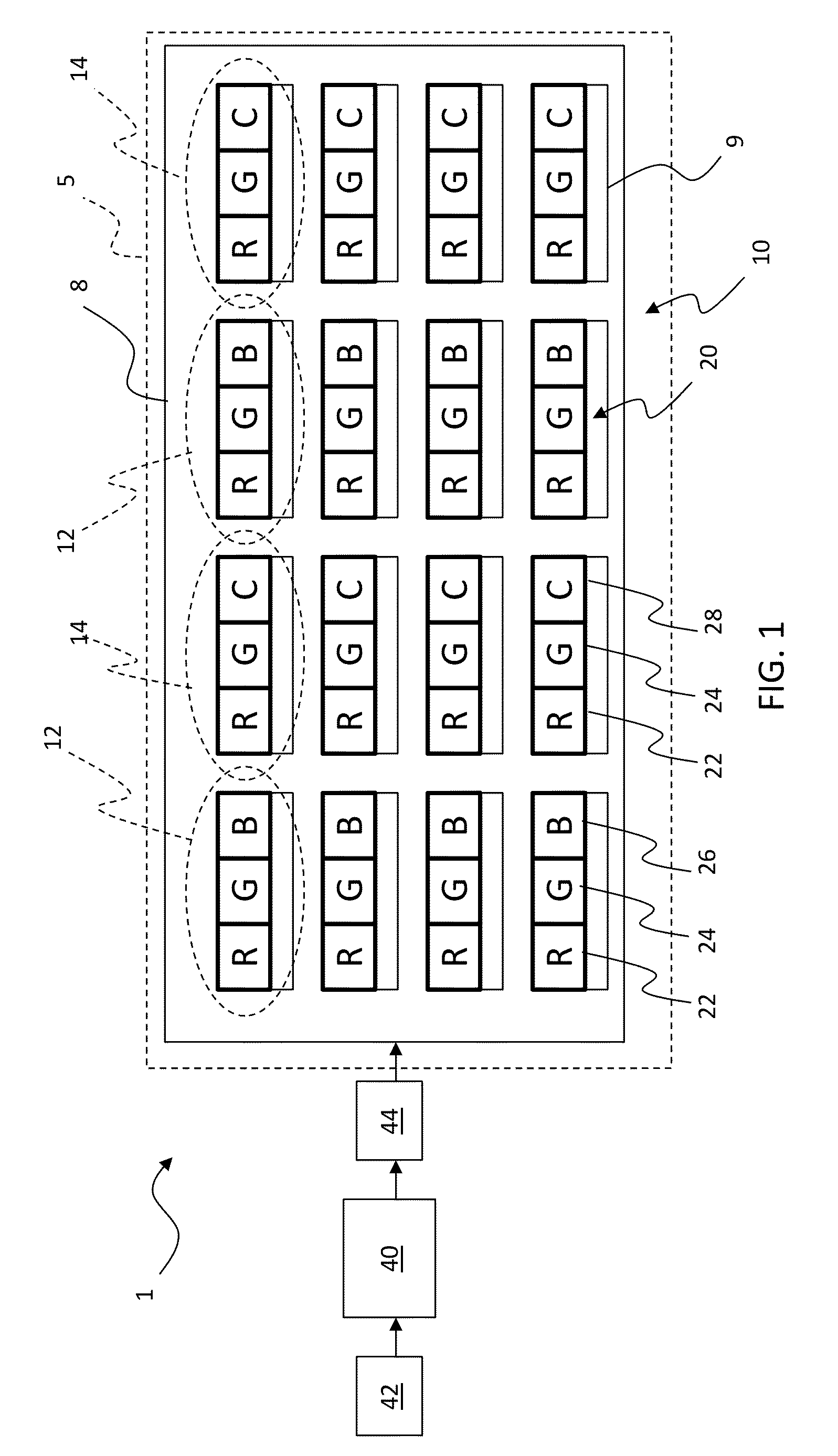Display pixels with alternating colors
a technology of display pixels and alternating colors, which is applied in the direction of electroluminescent light sources, static indicating devices, instruments, etc., can solve the problems of reducing the resolution of the display, reducing the brightness of the light-emitting display in part, and improving efficiency, color gamut and resolution
- Summary
- Abstract
- Description
- Claims
- Application Information
AI Technical Summary
Benefits of technology
Problems solved by technology
Method used
Image
Examples
Embodiment Construction
[0030]Display devices are typically designed with a preferred designed viewing distance. This viewing distance is sometimes expressed as a multiple of the height of the display screen with a viewing distance of two to three times the screen height preferred. Common viewing distance ranges are 25 to 40 cm for a hand-held display device, 40 cm to 80 cm for a desktop display device such as a computer monitor, and 1 to 4 meters for a household television.
[0031]Preferably, a display system will have a high resolution, so that individual pixels cannot be resolved on the display at the designed viewing distance. Thus, the preferred resolution for a display will increase as the viewing distance for the display decreases. A display whose pixels cannot be resolved by the human visual system is called an “eye-limited display” herein. An eye-limited hand-held display can be challenging to construct since the designed viewing distance for a hand-held device is relatively small compared to other ...
PUM
 Login to View More
Login to View More Abstract
Description
Claims
Application Information
 Login to View More
Login to View More - R&D
- Intellectual Property
- Life Sciences
- Materials
- Tech Scout
- Unparalleled Data Quality
- Higher Quality Content
- 60% Fewer Hallucinations
Browse by: Latest US Patents, China's latest patents, Technical Efficacy Thesaurus, Application Domain, Technology Topic, Popular Technical Reports.
© 2025 PatSnap. All rights reserved.Legal|Privacy policy|Modern Slavery Act Transparency Statement|Sitemap|About US| Contact US: help@patsnap.com



